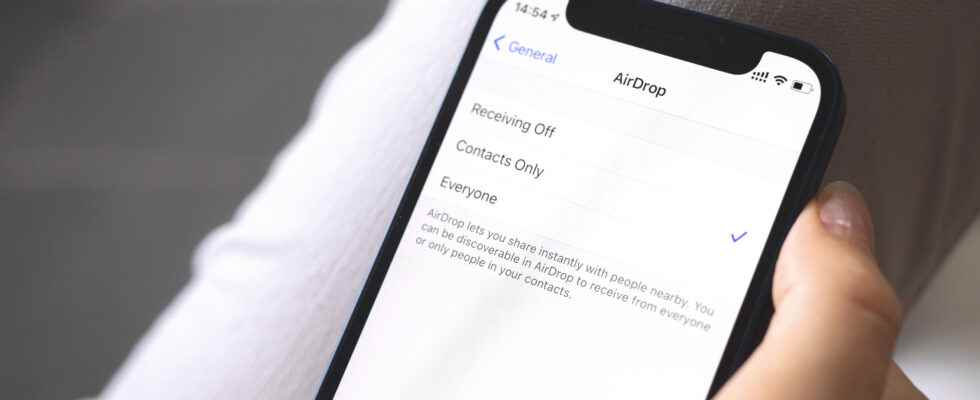In the upcoming iOS 16.2 update, sending files by AirDrop will be restricted. This feature was first deployed on iPhone Chinese to prevent the demonstrators from talking to each other.
The Middle Kingdom has been the scene of numerous demonstrations and riots protesting against its very strict zero COVID policy. In many cases, protesters have used AirDrop, and particularly its Everyone feature, to send each other information, photos or the like. Apple’s service allowed them to circumvent government censorship.
A feature coming to iOS 16.2
By leaving AirDrop’s privacy settings on “Everyone”, the Chinese could indeed receive information at any time. These included messages denouncing President Xi Jinping, as well as information about the protests and instructions on how to download VPNs.
With the iOS 16.1.1 update, however, they realized that Apple was limiting AirDrop Everyone and automatically returning those settings to “Contacts Only” after just 10 minutes, even if “Everyone” was selected. previously.
A month later, this functionality is found in the beta of iOS 16.2. The apple brand had however assured that it would be deployed worldwide during the next year.
What are Apple’s motives?
Does the premature launch of the feature prove that Apple acted to appease the Chinese authorities? The country is a key market for the American giant, not only because it represents 20% of its income but also because it operates the majority of its production there.
At the same time, AirDrop’s “Everyone” feature has been the subject of much criticism, as it allows anyone to literally send anything to another device from the Cupertino company, sometimes resulting in the sending of unsolicited nude photographs. According to Apple, automatically disabling the “Everyone” setting will prevent unwanted content from being received.
Sources: TechCrunch, Engadget

0